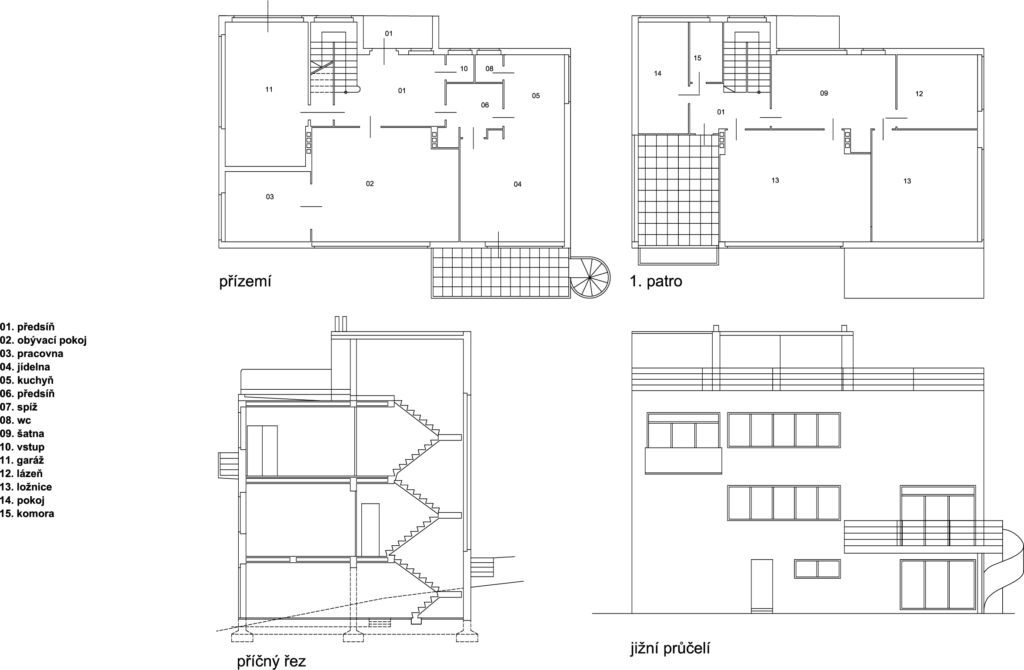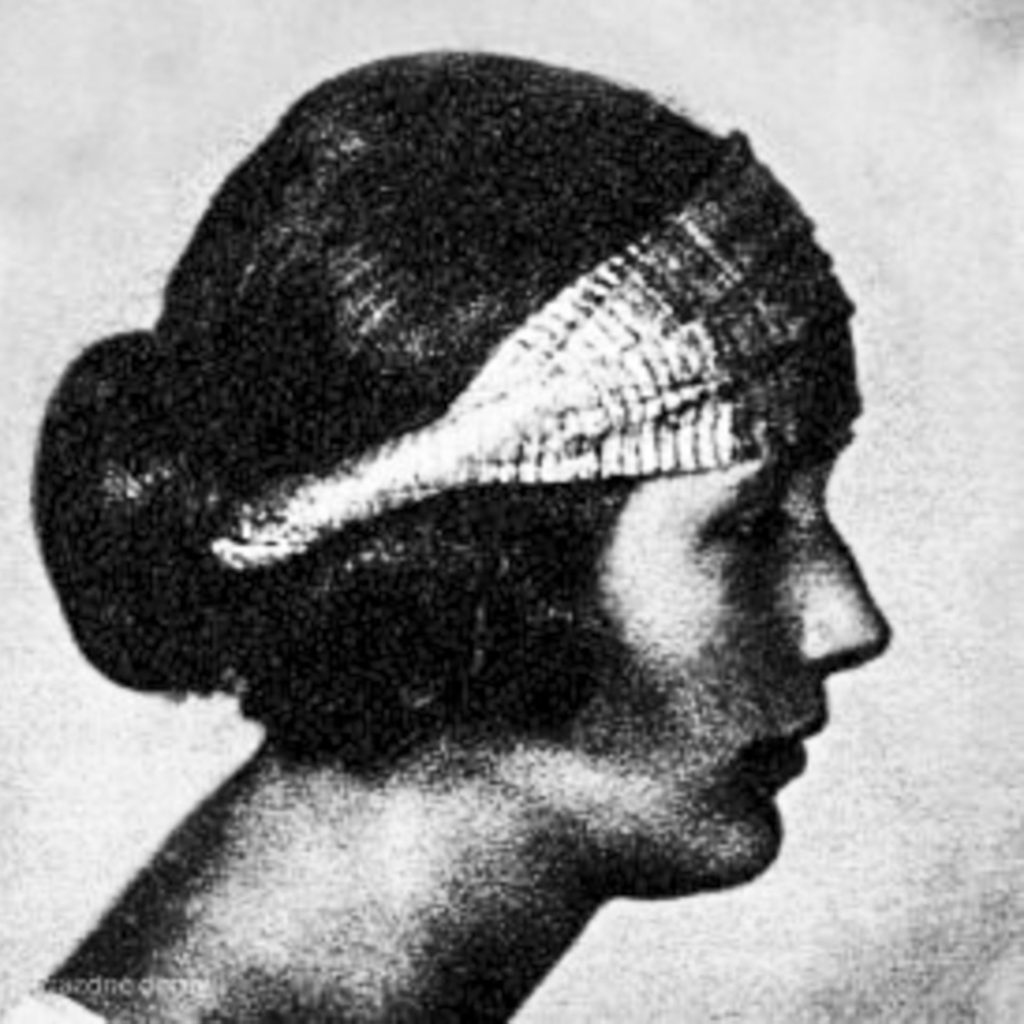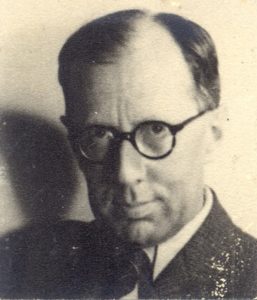
The House of Karel Balling
Hana Kučerová-Záveská, and her first design of two houses in Baba, was commissioned by Karel Balling. The villa clearly displays her vision of the individual living of middle-class families with children. She was a great advocate of practical living, with an emphasis on sanitariness and safety, including modern gadgets, such as gas and electric stoves which allowed women to work as efficiently as possible. The house was also equipped with a dumb waiter and home phone. The ground floor layout includes a study, living room and dining room connected to the garden by a glass wall and a staircase. The first floor, with the bedrooms, was equipped with a dressing room and a corner sunroom. The roof is designed to serve as a sundeck. Unfortunately, in her short life, the talented architect and designer would only finish two house designs – the Balling House and the Suk House.

Architect
Hana Kučerová-Záveská
(*1904 Prague +1944 Stockholm)

An architect, publicist, and progressive furniture and interior designer; a student of Pavel Janák at the Academy of Arts, Architecture and Design. As a member of the Czechoslovak Werkbund, she subscribed to the ideology of modern architecture: purposefulness of the floor plan, simple furniture which is comfortable yet affordable, and liberation of women from unnecessary housework. She commenced a successful cooperation with the Artěl association, as well as the furniture company Spojené uměleckoprůmyslové závody (UP) in Brno. Her furniture for the Barrandov terraces (1929) was later produced in series for many years. She only designed two houses in her short life – the Balling House and Suk House in the Baba estate. She died at the age of 40 in Stockholm, where she lived with her husband, Czechoslovak ambassador Dr. Vladimír Kučera.
1922-1927
studied architecture with Professors Karel Štípl, Josef Mařatka and Pavel Janák at the Academy of Arts, Architecture, and Design in Prague
1928-1937
independent architect and designer in Prague
1937
architect in Stockholm, where her husband Jaroslav Kučera worked as the ambassador
Significant Works
1928
restaurant terrace in Barrandov, Prague
1932
houses of Karel Balling and Antonia and Václav Suk, Baba, Prague-Dejvice
standard-type kitchen for Zenobie Vítězová, Přerov
several interior furnishings and designs for private clients
1933
participation in the “Apartment” exhibition of the Czechoslovak Werkbund (SČSD) in Prague
1934
house in Dobřichovice
Owner
Karel Balling
The composer Karel Balling (1889-1972) was one of the prominent figures of the legendary “Red Seven” (“Červená sedma”) cabaret. He composed stage music for the Vinohrady Theatre and wrote many popular dance compositions for the Lucerna and Rokoko cabarets. From 1922, he was the chief director of the Copyright Protection Association. He compiled and wrote the first Czech handbooks teaching the banjo (Škola hry na banjo) and the ukulele (Škola hry na ukulele).


